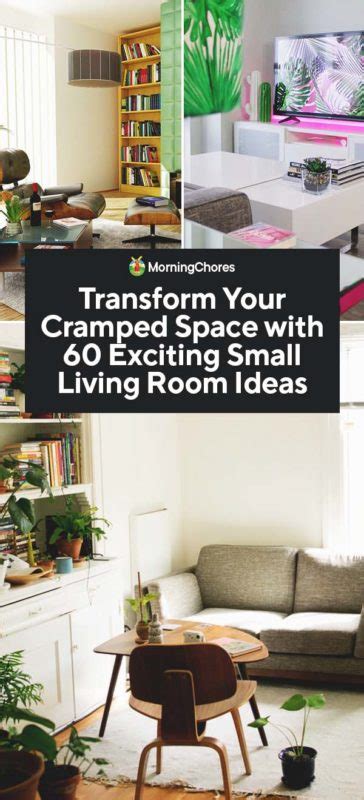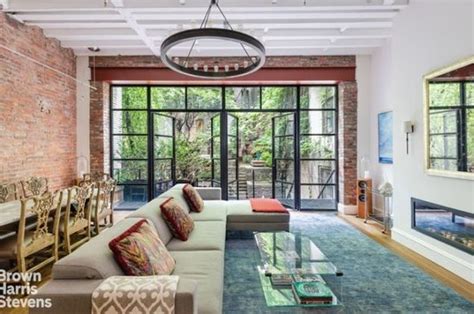
A cramped 120-square-foot office in New York City has been ingeniously transformed by interior designers, creating a workspace that feels significantly larger and more functional through clever space-saving solutions and a focus on maximizing natural light.
Two interior designers, tasked with revamping a tiny office space, demonstrated how strategic design choices can dramatically alter the perception of size and usability. The project, featured on Yahoo Lifestyle, highlights the transformative power of minimalist design, multi-functional furniture, and thoughtful organization in overcoming spatial limitations. The original office, described as claustrophobic and uninspiring, lacked storage and an efficient layout, hindering productivity and creativity. The designers tackled these challenges head-on, implementing several key strategies that resulted in a bright, airy, and remarkably more spacious-feeling environment.
One of the primary focuses of the renovation was to optimize the use of vertical space. In small environments, maximizing the height of a room can create an illusion of greater square footage. The designers installed custom-built shelving units that extended from floor to ceiling, providing ample storage without encroaching on the limited floor space. These shelves not only served a practical purpose but also added visual interest to the walls, drawing the eye upward and contributing to the feeling of spaciousness.
“We wanted to make sure every inch of the space was working hard,” said one of the designers, emphasizing the importance of efficiency in small-space design. This philosophy extended to the selection of furniture, with a strong emphasis placed on multi-functional pieces. A custom-designed desk, for example, incorporated hidden storage compartments and a fold-out extension, allowing it to serve as both a workspace and a meeting table. This eliminated the need for separate pieces of furniture, freeing up valuable floor space.
The color palette played a crucial role in the transformation. The designers opted for a light and neutral color scheme, primarily using whites and soft grays, to reflect light and create an airy atmosphere. Darker colors tend to absorb light, making a room feel smaller and more enclosed. By contrast, lighter hues reflect light, making the space appear brighter and more open. Strategic use of mirrors further enhanced this effect, reflecting natural light and creating the illusion of depth.
“Color is key,” explained the other designer. “We used light, reflective colors to bounce light around the room and make it feel bigger.” The designers also paid close attention to the placement of lighting fixtures. They incorporated a combination of overhead lighting, task lighting, and accent lighting to create a layered lighting scheme that illuminated every corner of the room. This eliminated shadows and further enhanced the feeling of spaciousness.
Another significant design element was the incorporation of natural elements. Plants were strategically placed throughout the office to add a touch of greenery and bring the outdoors in. Studies have shown that exposure to nature can reduce stress, improve mood, and enhance creativity, making it an essential element in any workspace. The designers also made sure to maximize natural light by keeping windows clear and unobstructed. Sheer curtains were used to filter sunlight and provide privacy without blocking the view.
The organization was also crucial in the room transformation. One of the biggest issues in small spaces is clutter. To combat this, the designers implemented a comprehensive storage system that kept everything in its place. In addition to the floor-to-ceiling shelves, they also incorporated hidden storage compartments in the desk and other furniture pieces. This allowed them to keep the office tidy and clutter-free, which significantly contributed to the feeling of spaciousness.
“Everything has its place,” noted one of the designers. “When you have a small space, it’s essential to be organized.”
The designers also paid attention to the details, adding small touches that made a big difference. For example, they replaced bulky hardware with sleek, minimalist designs. They also incorporated artwork and accessories that reflected the client’s personal style, adding a touch of personality to the space. These small details helped to create a cohesive and inviting environment.
The transformation of the 120-square-foot office demonstrates the power of good design. By carefully considering every detail, the designers were able to create a workspace that is both functional and aesthetically pleasing. The office now feels much larger and more inviting, providing a productive and inspiring environment for the client. The success of this project serves as a valuable lesson for anyone looking to maximize the potential of a small space. It highlights the importance of careful planning, thoughtful design choices, and a commitment to creating a functional and beautiful environment, no matter the size limitations. This revamped office demonstrates how a well-designed space can positively impact productivity, mood, and overall well-being.
The project also underscores the increasing demand for innovative small-space solutions in urban environments. As cities become more densely populated and housing costs continue to rise, more and more people are living and working in smaller spaces. This has created a growing demand for designers and architects who specialize in small-space design. These professionals are skilled at finding creative solutions to the challenges of small-space living, helping people to make the most of their limited square footage.
The renovation of this tiny office showcases the transformative power of good design. It demonstrates that even the smallest spaces can be beautiful, functional, and inspiring with the right approach. By focusing on maximizing space, light, and storage, the designers were able to create a workspace that feels much larger than it actually is. This project serves as a valuable lesson for anyone looking to make the most of a small space.
The designers’ approach provides a blueprint for tackling similar challenges in other small spaces. The key takeaways include prioritizing vertical storage, selecting multi-functional furniture, using light colors and mirrors to reflect light, incorporating natural elements, and maintaining a clutter-free environment. By implementing these strategies, anyone can transform a cramped and uninspiring space into a functional and inviting environment.
The transformed office now serves as a testament to the power of innovative design and its ability to enhance the quality of life, even within the confines of a small space. The project not only provides practical solutions for small-space living but also offers inspiration for anyone looking to create a more functional and aesthetically pleasing environment. The designers’ work is a reminder that good design is not just about aesthetics; it’s about creating spaces that support our needs and enhance our well-being.
This renovation project also touches upon broader trends in the interior design industry. There’s a growing emphasis on sustainability, with designers increasingly using eco-friendly materials and practices. The focus is shifting towards creating spaces that are not only beautiful and functional but also environmentally responsible.
Another trend is the increasing use of technology in interior design. Designers are now using virtual reality and augmented reality to help clients visualize their projects before they are built. This allows clients to make more informed decisions and ensures that they are happy with the final result. The use of smart home technology is also becoming more prevalent, with designers incorporating features such as automated lighting, temperature control, and security systems into their projects.
The transformed office incorporates several of these trends, showcasing the latest innovations in small-space design. The use of sustainable materials, such as reclaimed wood and recycled glass, helps to reduce the environmental impact of the project. The incorporation of smart lighting and temperature control systems enhances the functionality and energy efficiency of the space.
Overall, the renovation of this tiny office is a remarkable achievement that demonstrates the power of good design. By carefully considering every detail, the designers were able to create a workspace that is both functional and aesthetically pleasing. The office now feels much larger and more inviting, providing a productive and inspiring environment for the client. The success of this project serves as a valuable lesson for anyone looking to maximize the potential of a small space.
The designers have set a new standard for small-space design, demonstrating that even the most challenging spaces can be transformed into beautiful and functional environments with the right approach. Their work serves as an inspiration for designers and homeowners alike, encouraging them to think creatively and to embrace the possibilities of small-space living. The project’s widespread attention also highlights the public’s growing interest in design solutions that address the challenges of urban living and the increasing demand for spaces that are both aesthetically pleasing and functionally efficient.
The success of the office transformation serves as a model for other small businesses and individuals looking to optimize their workspaces. By implementing similar design strategies, they can create environments that foster productivity, creativity, and well-being, regardless of size limitations. The project also underscores the importance of investing in professional design services, as skilled designers can bring expertise and innovative solutions that may not be readily apparent to the average person.
In conclusion, the transformation of the 120-square-foot office is a testament to the transformative power of thoughtful design. The designers’ meticulous attention to detail, strategic use of space, and commitment to creating a functional and aesthetically pleasing environment have resulted in a workspace that feels significantly larger and more inviting. This project serves as a valuable lesson for anyone looking to maximize the potential of a small space and highlights the importance of good design in enhancing our quality of life. The success of this endeavor is a shining example of how innovative design can overcome spatial limitations and create environments that inspire, motivate, and support our well-being. This small office, once cramped and uninspiring, now stands as a beacon of design ingenuity, showcasing the potential for transformation in even the most challenging of spaces. The carefully considered solutions implemented by the designers offer practical guidance and inspiration for individuals and businesses seeking to optimize their limited square footage and create environments that are both functional and aesthetically pleasing. The project emphasizes the importance of investing in professional design services and highlights the growing demand for innovative small-space solutions in urban environments. This transformation is not just about aesthetics; it’s about creating spaces that enhance productivity, creativity, and overall well-being, proving that even the smallest spaces can have a big impact with the right design approach.
Frequently Asked Questions (FAQ):
1. What were the main challenges in transforming the 120-square-foot office space?
The primary challenges included the limited square footage, lack of storage, inefficient layout, and the need to create a functional and inspiring workspace within a small and potentially claustrophobic environment. The designers had to maximize every inch of space to create a sense of spaciousness and enhance productivity.
2. What specific design strategies did the designers employ to make the office feel larger?
The designers used several key strategies: maximizing vertical space with floor-to-ceiling shelving, selecting multi-functional furniture with hidden storage, using a light and neutral color palette to reflect light, incorporating mirrors to create the illusion of depth, strategically placing lighting fixtures to eliminate shadows, and incorporating natural elements like plants to bring the outdoors in. They also focused on maintaining a clutter-free environment through comprehensive storage solutions.
3. Can you provide some examples of multi-functional furniture used in the office transformation?
The custom-designed desk incorporated hidden storage compartments and a fold-out extension, serving as both a workspace and a meeting table. This eliminated the need for separate pieces of furniture, freeing up valuable floor space. Additional examples from other small-space designs include sofa beds, storage ottomans, and wall-mounted folding desks.
4. How important was the choice of color palette in the office transformation, and why?
The color palette was crucial. The designers opted for light and neutral colors, such as whites and soft grays, to reflect light and create an airy atmosphere. Lighter hues reflect light, making the space appear brighter and more open, while darker colors tend to absorb light, making a room feel smaller and more enclosed.
5. What advice would the designers give to someone looking to transform a small space in their own home or office?
The designers would advise prioritizing vertical storage, selecting multi-functional furniture, using light colors and mirrors to reflect light, incorporating natural elements, and maintaining a clutter-free environment. They would also emphasize the importance of careful planning, thoughtful design choices, and a commitment to creating a functional and beautiful environment, no matter the size limitations. Consider professional design services to get expertise and innovative solutions.
6. What types of lighting were used to enhance the feeling of spaciousness?
The designers incorporated a layered lighting scheme that included overhead lighting, task lighting, and accent lighting. This combination illuminated every corner of the room, eliminating shadows and further enhancing the feeling of spaciousness. The lighting was carefully positioned to maximize brightness and avoid creating dark areas that could make the room feel smaller.
7. How did the designers address the issue of clutter in the small office space?
To combat clutter, the designers implemented a comprehensive storage system that kept everything in its place. This included floor-to-ceiling shelves and hidden storage compartments in the desk and other furniture pieces. The emphasis was on having a designated place for every item to maintain a tidy and clutter-free environment, which significantly contributed to the feeling of spaciousness.
8. What role did natural elements, such as plants, play in the office transformation?
Plants were strategically placed throughout the office to add a touch of greenery and bring the outdoors in. Exposure to nature has been shown to reduce stress, improve mood, and enhance creativity, making it an essential element in any workspace. The designers also maximized natural light by keeping windows clear and unobstructed and using sheer curtains to filter sunlight and provide privacy.
9. How can the principles of this office transformation be applied to other small spaces, such as apartments or studios?
The principles can be applied to any small space by focusing on maximizing vertical space, selecting multi-functional furniture, using light colors and mirrors to reflect light, incorporating natural elements, and maintaining a clutter-free environment. These strategies are universally applicable and can be adapted to suit the specific needs and constraints of any small space. Careful planning and thoughtful design choices are key to creating a functional and aesthetically pleasing environment.
10. What is the importance of investing in professional design services for small-space transformations?
Investing in professional design services can provide access to expertise and innovative solutions that may not be readily apparent to the average person. Skilled designers can assess the space, identify potential challenges, and develop creative solutions to maximize its potential. They can also help to select appropriate furniture and materials, create a cohesive design scheme, and manage the renovation process, ensuring that the project is completed on time and within budget.
11. What are some sustainable materials that can be used in small-space designs?
Sustainable materials that can be used include reclaimed wood, recycled glass, bamboo, cork, and eco-friendly paints and finishes. These materials help to reduce the environmental impact of the project and create a healthier indoor environment. Using sustainable materials aligns with the growing emphasis on sustainability in the interior design industry.
12. How can technology be integrated into small-space design to enhance functionality and efficiency?
Technology can be integrated through smart lighting and temperature control systems, automated window shades, and space-saving appliances. Smart technology can enhance the functionality and energy efficiency of the space, making it more comfortable and convenient to use. Additionally, virtual and augmented reality can be used to visualize design projects before they are built, allowing clients to make more informed decisions.
13. What are some common mistakes to avoid when designing a small space?
Common mistakes include using dark colors, selecting oversized furniture, neglecting vertical storage, failing to maximize natural light, and creating clutter. Avoiding these mistakes is crucial for creating a functional and spacious-feeling environment. Careful planning and attention to detail are essential for successful small-space design.
14. How can mirrors be used effectively in small-space design to create the illusion of more space?
Mirrors can be strategically placed to reflect light and create the illusion of depth. Placing a large mirror on a wall can effectively double the perceived size of the room. Mirrors can also be used to reflect natural light from windows, making the space brighter and more open. The placement and size of mirrors should be carefully considered to maximize their effect.
15. What are the benefits of using custom-built furniture in small spaces?
Custom-built furniture can be designed to perfectly fit the dimensions of the space and maximize storage potential. Custom pieces can also be tailored to meet specific needs and preferences, ensuring that the furniture is both functional and aesthetically pleasing. While custom furniture may be more expensive than off-the-shelf options, it can be a worthwhile investment for maximizing the potential of a small space.
16. How does the transformation of this small office reflect broader trends in interior design?
The transformation reflects trends such as the emphasis on sustainability, the integration of technology, and the growing demand for small-space solutions in urban environments. The use of sustainable materials, smart technology, and innovative space-saving strategies aligns with the evolving needs and preferences of modern consumers. The project also underscores the importance of creating spaces that are both functional and aesthetically pleasing.
17. What are some affordable ways to transform a small space on a budget?
Affordable ways to transform a small space include decluttering and organizing, repainting with light colors, rearranging furniture, adding inexpensive storage solutions, incorporating plants, and using mirrors. These simple changes can make a big difference in the look and feel of the space without breaking the bank. DIY projects and thrifting for furniture and accessories can also help to save money.
18. How can the principles of minimalist design be applied to small-space transformations?
Minimalist design principles emphasize simplicity, functionality, and the elimination of unnecessary elements. Applying these principles to small-space transformations can help to create a clutter-free and spacious-feeling environment. This involves selecting only essential furniture and accessories, using a neutral color palette, and focusing on maximizing storage.
19. What are some ways to create a sense of visual interest in a small space without adding clutter?
Ways to create visual interest include using textured fabrics, incorporating artwork, adding patterned rugs, and displaying a curated collection of objects. These elements can add personality and depth to the space without creating clutter. It’s important to choose items that are meaningful and contribute to the overall aesthetic of the room.
20. How can I find a qualified interior designer who specializes in small-space transformations?
You can find a qualified interior designer by searching online directories, asking for referrals from friends and family, and checking reviews and testimonials. Look for designers who have experience with small-space projects and a portfolio that showcases their skills and expertise. It’s also important to interview several designers to find someone who understands your needs and has a compatible design style.









